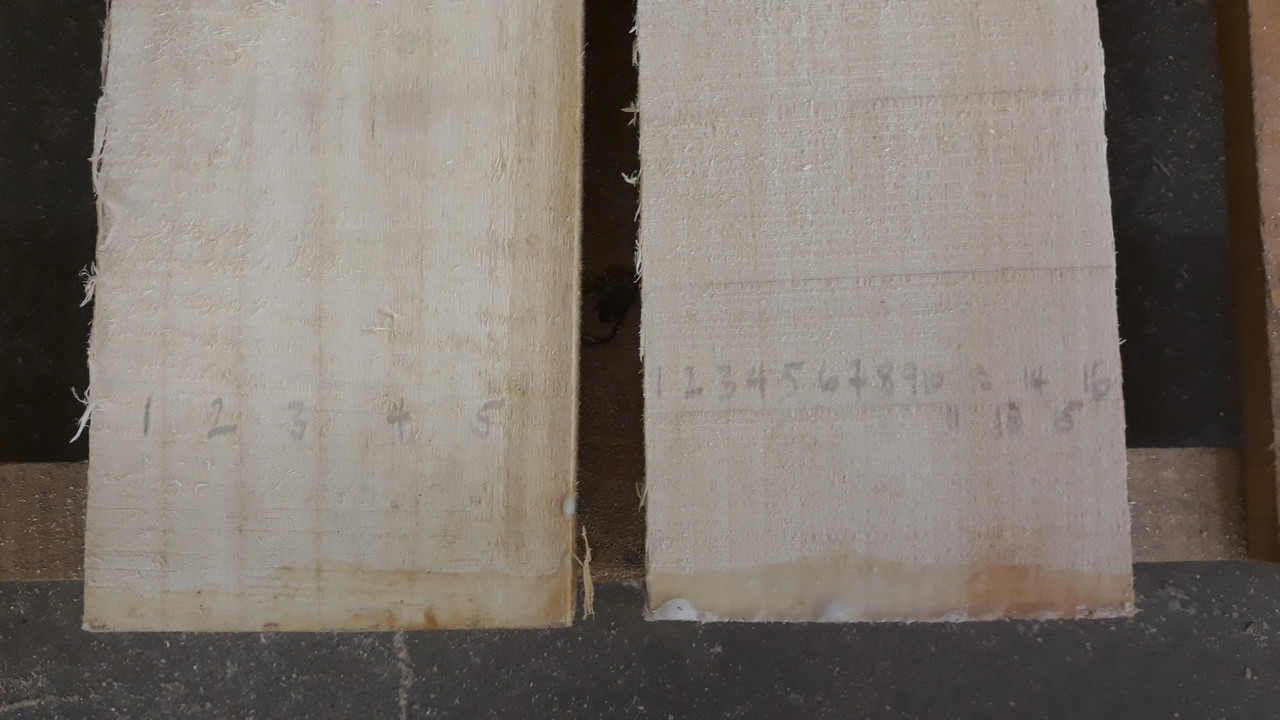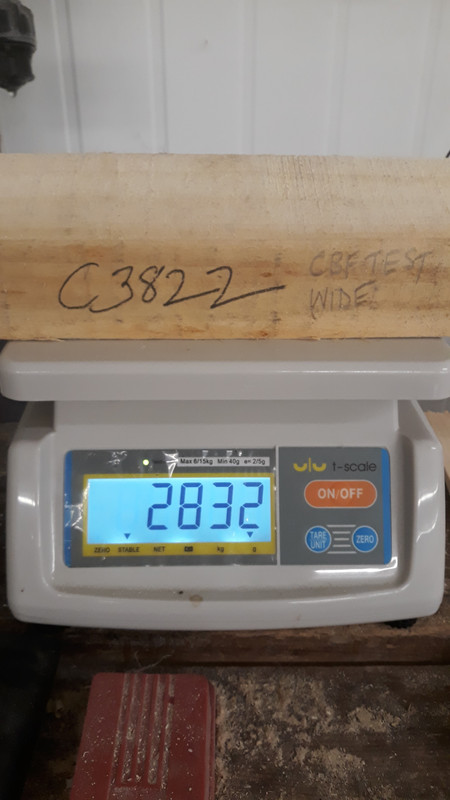Evening all. There's often lots of discussion about Narrow Grain willow and Wide Grain willow - the pros and cons, similarities, differences and everyone's personal preferences. I thought I'd run a little test on this, try to bring some amateur science to bear and see if I could shed any light on the issue, or simply add fuel to the fire.

I've chosen 2 clefts to study and mess around with over the next weeks and months. Best case they eventually become bats that can be tested against each other, we'll see how that works out. For now, some facts, and photos:
In this photo, the Wide Grain cleft is on the Left, the Narrow Grain cleft is on the right.

The Narrow Grain cleft is from a tree grown in Sudbury, Suffolk, about 3 miles from where I live. It was planted in 1987 and grew about 80 metres from the River Stour. I felled the tree on August 14th 2018 and cut this cleft on or around August 31st. It has 16 grains across the face of the cleft.
The Wide Grain cleft is from a tree grown in Boxford, Suffolk - approximately 4 miles away from the other tree. It was planted around 2006 and grew about 25 metres from the River Box. I felled the tree on August 7th 2018 and cut this cleft on 26th August. It has 5 grains across the face.

Due to my rudimentary sawing skills

, the clefts are similar in shape and size, but not identical. The full dimensions of the 2 clefts are as follows:
Narrow Grain Wide Grain
Length 702 mm 770 mm
Width 125 mm 131 mm
Spine 80 mm 72 mm
Edge 56 mm 52 mm
Original weight 3992 g 3822 g
Today's weight 3226 g 2832 gBoth trees were mature enough to fell, but the Narrow Grain tree (Sudbury) was bigger. From the grain structure though (each gap between grains signifying 1 year of growth), we can see that the Wide Grain tree (Boxford) has been bulking up nearly 3 times faster, due to being planted considerably closer to the main water source and also benefitting from its location on a downslope. On average, the Wide grains are approximately 22 mm apart, pretty amazing growth each year to be honest.
Since being cut, both clefts have been airdrying in stacks in my workshop, within 5 metres of each other. Immediately after sealing them, I weighed both clefts and marked them with the measurements. In preparation for this post, I weighed them again today, approximately 6 weeks from their date of cutting.


So, this is the first interesting issue to comment on. As you can see from the scales, in just 6 weeks the Wide Grain cleft has dried faster, and has lost 990g - 25.9% of its original weight. The Narrow Grain cleft has only lost 776g - 19.2% of its original weight. This suggests to me that faster growing willow is made up of less wood fibre, and more water, which makes sense. The fibres of the wide grain cleft are therefore less dense and moisture is released more easily.
My personal belief is that there is little difference in performance between Narrow and Wide grain willow. But, I also believe that due to its higher density, narrow grain willow is stronger, and more durable - all things being equal, narrow grain bats last longer. I'm not sure if I will be able to prove or disprove this theory with this experiment, but I'll give it a go!
The next step will be to complete the drying of both clefts in a kiln. I will post an update at that stage. Any thoughts, comments or suggestions welcome.

 Author
Topic: Narrow Grain vs Wide Grain - Amateur Science (Read 36056 times)
Author
Topic: Narrow Grain vs Wide Grain - Amateur Science (Read 36056 times)
